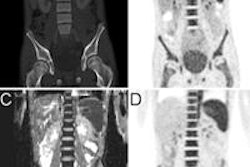Monday, December 1 | 3:50 p.m.-4:00 p.m. | SSE19-06 | Room S505AB
By combining visual and quantitative analysis of FDG-PET brain images, clinicians can improve diagnostic accuracy for detecting hypometabolic patterns that could indicate mild cognitive impairment in elderly patients with hypertension and memory complaints.The study from researchers at Centre Hospitalier Universitaire de Nancy in France was led by Dr. Axel Van Der Gucht from the department of nuclear medicine.
FDG-PET is a key modality in the diagnosis of Alzheimer's disease and mild cognitive impairment (MCI). By identifying hypometabolic patterns that could indicate mild cognitive impairment, clinicians can better differentiate between MCI and Alzheimer's disease.
Van Der Gucht and colleagues performed FDG-PET brain imaging on 71 patients (mean age, 76.4 years) to determine the presence of MCI-like hypometabolic patterns using specific volume-of-interest analysis, as well as a voxel-based quantitative analysis known as statistical parametric mapping. They then compared the patients' images with reference samples from 19 healthy elderly individuals who were imaged with the same PET scanner.
The researchers found MCI-like hypometabolic patterns in eight patients (11%) through volume-of-interest analysis and in seven patients (10%) with statistical parametric mapping. However, MCI-like hypometabolic patterns were detected by both methods in only three patients.
The group characteristics of the seven patients identified by the quantitative method were consistent with the MCI pattern. In contrast, the patients identified by the volume-of-interest analysis did not exhibit these characteristics.




















